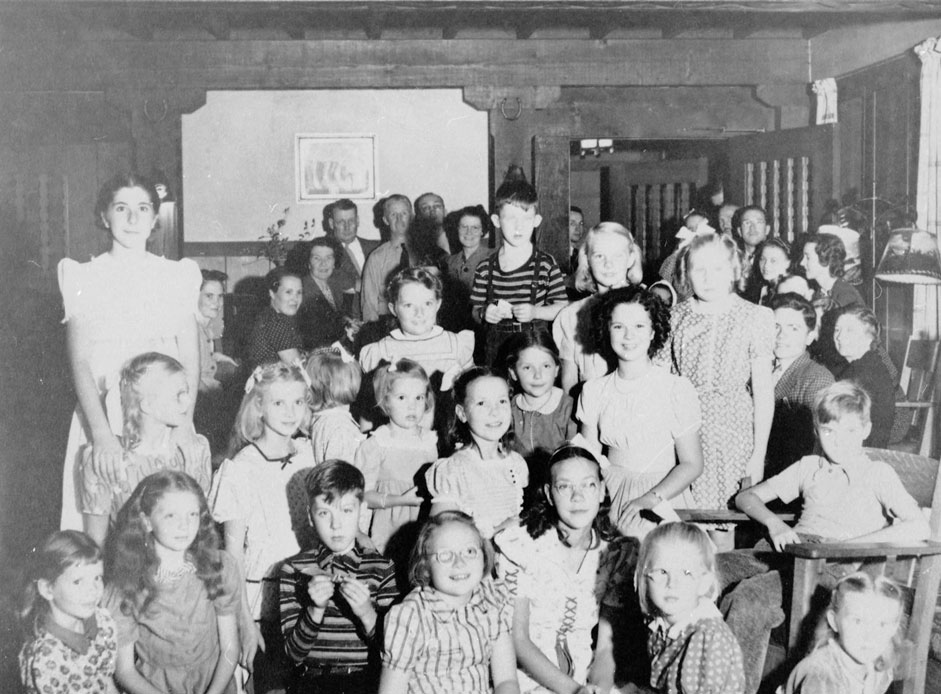The 1920s through 1980s seem to present a sweet spot for nostalgia—recent enough to still reside in our memories through the stories of our parents and grandparents, to be documented thoroughly by photos and film—and yet far enough back to retain an air of rose-tinted mystery. We can immerse ourselves in nostalgia for a simpler, more honest time, but we cannot bring it back; it evades us.
Indeed, everything from the past seems better: vintage clothing, vintage cars, and even advertisements become charming when they feature vintage typefaces and rosy-cheeked housewives in polka-dot dresses.
Looking through historic photos of park workers and visitors in the Yosemite National Park archives is like peering back into a sugar-frosted, carefree world that has been lost to time. People experience the joy of the park for the first time with no smartphones or traffic jams to be seen, and their experiences seem more innocent for it. The people in the photos all have the same wondrous smiles, the same coiffed hair, the same classic cars. And the same skin color.

Upon examination of a flock of schoolchildren in a meadow, I couldn’t find a single one who wasn’t white. No little African-American kids or Latino kids or Asian kids ogling birds and learning about the water cycle. The rest of the photos in the archives were the same. White moms and white dads and white couples and white rangers.
“Why?” a coworker asked me on the drive home one day, “Why weren’t there any non-white people in the photos?”A ranger in the park had asked us to seek out any historic photos of non-white park workers and visitors, and I’d spent an entire afternoon pawing through stacks of pictures. The verdict: none. Sure, there were a few diplomatic visits here and there: the Japanese swim team, the Egyptian ambassador, the emperor of Ethiopia. But I had yet to find any pre-1980 photographic evidence of non-white people visiting the park of their own accord, for their own enjoyment, and nothing else.
Why indeed?
The answer, of course, is all too obvious. Apart from the social and financial disadvantages that could have been a substantial roadblock to park visitation (in 1966, 41% of black Americans fell below the poverty line), the threat of overt racism from staff and fellow visitors, as well as denial from the park and its facilities sent a clear message. These spaces aren’t for you. The effects still linger: a 2008 survey found that even today, park visitation skews significantly toward white people.
Of course, the historic value of the archives isn’t diminished by this, but as our understanding of the park and its history develops, this seems too important a piece to leave out of the puzzle. It’s easy for us to immerse ourselves so much in nostalgia that we forget others can’t share it; it’s not a part of their history. This doesn’t mean we can’t indulge in that nostalgia, or that we have to feel bad for enjoying it, but not being an expert on Yosemite, history, or race relations, it’s hard to say what it does mean, especially for present-day Yosemite.
I can’t offer a definitive answer, and maybe there is no definitive answer, but I am the one writing this blog post, so I will share what I am going to make of it. We can’t think of gatekeeping and prejudice as a thing of the past when they still exist in present day outdoor communities. It’s not enough to act in ambivalence when stronger forces are at play. Both as a member of the public to whom the parks belong and a (soon-to-be-former) park employee, it’s my responsibility to make people feel welcome wherever I go, even if it’s just striking up trail conversations, offering or asking for advice, or sharing a snack or drink.
You can go further, too, and support organizations that advocate for a more inclusive outdoor experience both inside and outside of national parks. There is no shortage of ways to get involved. But even someone with little time or money to spare can reach out and be friendly and welcoming at every opportunity to contribute to a more positive park environment, and maybe pick up some new friends or knowledge along the way. Just like our country, parks should be a place of unity and empowerment for everybody, and it is within the power of all those who visit to make it so.
